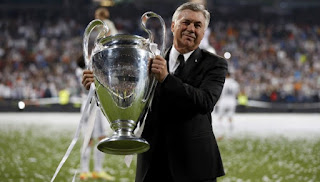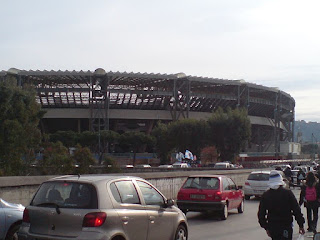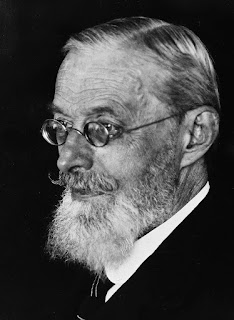Sicilian mobster defied code of silence by publishing memoirs
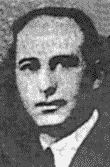 |
| Nick Gentile was rarely photographed |
Gentile’s book, Vita di Capomafia, which he wrote in conjunction with a journalist, was published in 1963 and provided much assistance to the American authorities in their fight against organized crime.
As a result Gentile was sentenced to death by the mafia council in Sicily for having broken the code of omertà, a vow of silence to which all mafiosi are expected to adhere to protect their criminal activities. Siculiana, in fact, was a mafia stronghold, where the code was usually enforced with particular rigour.
Yet the mobsters from the city of Catania who were tasked with carrying out the sentence declined to do so, for reasons that have not been explained. In the event, Gentile died in Siculiana in 1966 of natural causes, having spent his last years as an old, sick man who appeared to have very little money and was kept alive by the kindliness of neighbours.
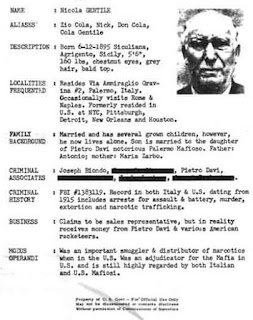 |
| The file the American FBI kept on Gentile's criminal activity and personal details |
Gentile - known in his home country as 'Zio' or 'Zu Cola' (Uncle Nicola) - went to America as an illegal immigrant at the age of 19, having been invited there by a small crime clan made up of Sicilians from Siculiana, acting in New York as well as Philadelphia and Kansas City.
He developed a reputation for being able to mediate in disagreements between rival Mafia families and subsequently travelled regularly from state to state as a peacemaker, while at the same time capitalising on the respect he gained from others by forming strategic alliances.
In the 1920s. Gentile was the head of criminal smuggling cartels plus the mafia families of Kansas City, Cleveland and Pittsburgh.
Gentile returned frequently to Sicily, sometimes to visit relatives, at other times to escape his enemies and the law. Ultimately, his criminal activities in America were based in New York, where he became involved with narcotics operations headed by Charles 'Lucky' Luciano.
He returned to Sicily permanently after being arrested in New Orleans in 1937 on drug charges, fleeing the country on $15,000 bail.
 |
| Charles "Lucky" Luciano was an associate of Gentile both in the United States and in Sicily |
He became involved with a Sicilian separatist movement and claimed to have been approached by a US special agent to rally support for the monarchy in the referendum on June 2, 1946.
When Lucky Luciano was extradited to Italy in 1946, he also is said to have been a collaborator with the US military. In Sicily he was again able to team up with Gentile and questions have been raised since over how he and Gentile had the freedom to organise drug trafficking routes to the US.
Quite why, in 1963, Gentile decided to write his memoirs, with the help of Italian journalist Felice Chilanti, is not clear. In describing the internal organization of the Mafia, or l'onorata società - the Honoured Society - as Gentile called it, he ignored the code of omertà in a way not seen until the pentito Tommaso Buscetta began to reveal secrets more than 20 years later.
Ultimately, the American law enforcement agencies used the detail in Gentile’s book to corroborate the evidence of another repentant mobster, Joe Valachi, who told them that Gentile’s descriptions were accurate.
 |
| The marina area at Siculiana is part of an unspoilt stretch of Sicilian coastline in the southeast of the island |
Siculiana, a town thought to have Greek and Arab roots, is situated on the south-facing coast of the island, about 24km (15 miles) from Agrigento. The Chiaramonte family built a castle, parts of which are still visible, on the ruins of an Arab fortress that was destroyed in 1087 during the conquest of Sicily by the Normans. A 13km (8 miles) stretch of unspoilt coastline northwest of Siculiana is now a protected nature reserve.
| A view across the port of Porto Empedocle, where Andrea Camilleri based his Montalbano novels |
Only 13km (8 miles) from Siculiana along the coast in the other direction, on the way to Agrigento, is Porto Empedocle, the birthplace of the author Andrea Camilleri and the port town on which he based Vigàta, the fictional home of his famous detective, Inspector Montalbano. Camilleri’s Montalbano books have become international best-sellers, with many of them turned into episodes of the crime drama TV series starring Luca Zingaretti as Montalbano. Many scenes from the TV series were filmed around Porto Empedocle, which has now changed its name to Porto Empedocle Vigàta to encourage Camilleri fans to visit the area.
More reading:
How Charles 'Lucky' Luciano became one of organised crime's most powerful figures
Andrea Camilleri - the creator of Inspector Montalbano
The story of anti-mafia crusader Giovanni Falcone
Also on this day:
1675: The death of Charles Emmanuel II, notorious Duke of Savoy
1922: The birth of astrophysicist Margherita Hack
Home






